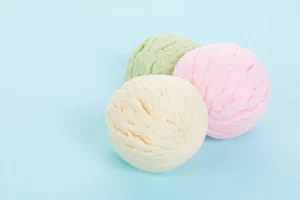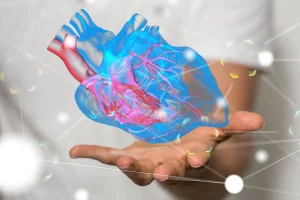THURSDAY, July 6, 2023 (American Heart Association News) — As a psychotherapist and wellness consultant with clients from New York to New Zealand, Aishia Grevenberg is happy to recommend self-care. But don’t expect it to end in a day at the spa.
“I think ‘self-care’ is a truly watered-down term, in the sense that it has almost become like ‘bubble baths and manicures,'” Grevenberg said. It’s much more intense than that, she said, “and it’s not always pretty or easy or fun.”
For Grevenberg, self-care is about being aware of your feelings and addressing them honestly. “If a client tells me, ‘I felt rejected’ or ‘I felt upset,’ I’m always looking for the underlying meaning.” She works to get to the root of that emotion.
Looked at this way, self-care can feel heavy or uncomfortable, she said, “but it is necessary to being a person.”
According to the National Institute of Mental Health, self-care in its many forms is an important part of overall health. And Grevenberg, who is based out of Playa Del Carmen in Mexico’s Yucatan Peninsula, practices what she preaches. She explained how for “The Experts Say,” an American Heart Association News series where specialists discuss how they apply what they’ve learned to their own lives. (The conversation has been edited.)
What does self-care look like to you?
It’s really a mindfulness meditation, and being with yourself and with your emotions in a gentle and loving way. It looks very different to different people at different times.
The term gets thrown around a lot these days.
It’s ubiquitous. And because it has lost its meaning, it can be used for anything.
The idea of doing hair, nails, that kind of thing – that’s a way of doing things for yourself, but it’s not necessarily being with yourself. Self-care is fundamentally about being, not doing.
When self-care is about being, it often is extremely uncomfortable. But when you are dealing with your sadness, or your guilt, or your disappointment – that is self-care.
The problems I see in individuals and organizations I work with come from the avoidance of the self and our fear of being consumed by the depth of our feelings. My work is to help them have the courage to sit with whatever comes up and allow it to pass.
Truly feeling the full spectrum of human emotion is self-care.
This sounds a lot more involved than just sitting on the couch and eating ice cream.
I don’t want to say it’s a task or a chore, but you have to be able to make the effort, to notice when you’re not feeling like yourself, then check on yourself to see what’s been going on.
Establishing a relationship with yourself that you nurture daily – that’s what self-care is.
Is it time-consuming?
It doesn’t really take a long time. I don’t ask my clients to sit somewhere and meditate for hours on how they feel. It really is a very simple check-in: “You know, I’m noticing that I’m feeling something. I’m just going to pause in this moment, maybe take a couple of deep breaths, and welcome whatever’s going on. I can manage this.”
So I’m not even asking for five minutes. It’s a check-in.
Here’s an example of the difference between the popularized idea of self-care as opposed to being fully in the moment: I was having dinner with a dear friend. We were sitting outside, beautiful weather, beautiful patio. But at one point, a police car pulled up maybe two blocks away. And the lights became an annoyance.
Most people’s idea of self-care would be to get whatever you want on the menu. Have a few cocktails. But I wanted to be present with my friend, and I couldn’t do it because I was distracted.
My self-care in that moment was to pause her while she was speaking and ask, “Do you mind if we move the table so that I don’t have to face this big flashing light?” And she said, “You know, it’s actually reflecting off the window behind you, so it’s distracting me as well.”
We’re both therapists, and for about five minutes we were equally uncomfortable. But we were trying to deal with it as opposed to being present.
It was a quick fix. We just asked the waiter to move our stuff. It took two seconds.
How else do you practice this kind of self-care?
Like I said, it doesn’t take a lot. When I wash my hands, it’s definitely a meditation for me. I’m plugged in.
Other times, I make sure I get up and walk around. I’m present and checking in with myself.
Making sure that I am grounded and aware of what’s going on, for me, is the very best thing I can do for my clients. I’m a regular person. It’s not like every day I’m excited and jumping over the moon. Being able to acknowledge that to myself is the way that I’m able to do my best work.
Have you always been able to practice self-care this way?
I didn’t always. But I began to learn that, when I didn’t just check in, just like with any other relationship, I would miss things. Or I would be a little detached, like, “Oh, I noticed that this is bothering me, but I’ll address it later.”
But things can pile up. And I could get to the end of my day and be completely tapped out, when if I had stopped earlier, checked in with myself, taken a couple deep breaths, I could have moved a different way throughout my day. Maybe I needed to acknowledge I didn’t sleep well, or maybe I needed to eat breakfast.
Was there a particular moment when you realized you needed to make this sort of self-reflection a regular part of your life?
I can specifically remember 2011, when I was finishing up my clinical social worker’s license. I was also a professor for the very first time, and I was teaching graduate students. I was also seeing clients inside their homes. So I was driving all over Las Vegas in the middle of 115-degree weather, literally beating the pavement, working with the department of family services.
I worked with children after school. I worked with children with cancer in hospitals. I worked with juveniles who were under judicial supervision.
And it was overwhelming. I felt like I couldn’t stop because I was so close to finishing my hours. I thought, “I gotta push through, I gotta push through, I gotta push through.” I was exhausted. And there wasn’t really a lot of support other than “finish it” from my peers. And so there wasn’t space for me to say that this was entirely too much.
I did finish. I did push through. And I never worked with children again because it was entirely too much for me.
Before, I didn’t have the confidence to say, “I’m torn up emotionally. I can’t work with children. It’s too triggering.” After that experience, I’m able to say, “I love children, but I don’t work with children because of what it does to me emotionally.”
If somebody reading this says, “I need to do a better job of actually knowing myself and taking care of myself,” where do they begin?
All I would ask that person to do is perhaps add five minutes in the morning to whatever it is they do. Sit with an awareness of who you are and where you are. Add one loving statement: “I’m going to try to see myself today. I’m going to try to be loving to myself today. I’m going to try to be gentle to myself today. I’m going to be aware. I’m willing to try.” One sentence, with an attitude of, “It’s OK to be me. However, I feel today, I’m going to allow it to be.”
Be aware of what you’re feeling, where you’re feeling it in your body. And from that, the direction that each person needs to take for themselves will become more clear.
The healing comes when we can be.
American Heart Association News covers heart and brain health. Not all views expressed in this story reflect the official position of the American Heart Association. Copyright is owned or held by the American Heart Association, Inc., and all rights are reserved.
By Michael Merschel, American Heart Association News
Copyright © 2025 HealthDay. All rights reserved.

















